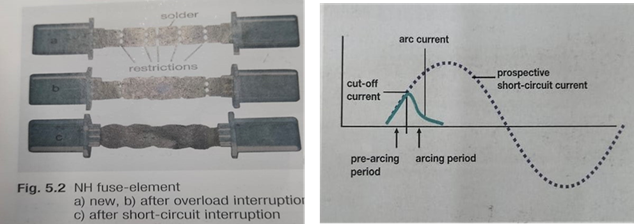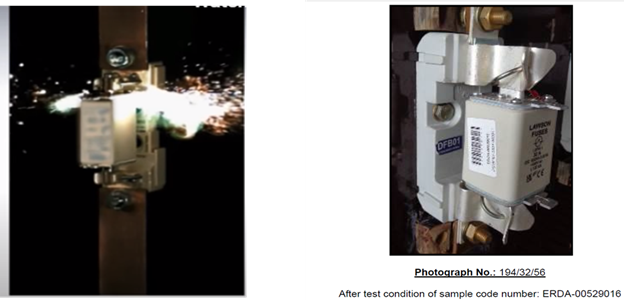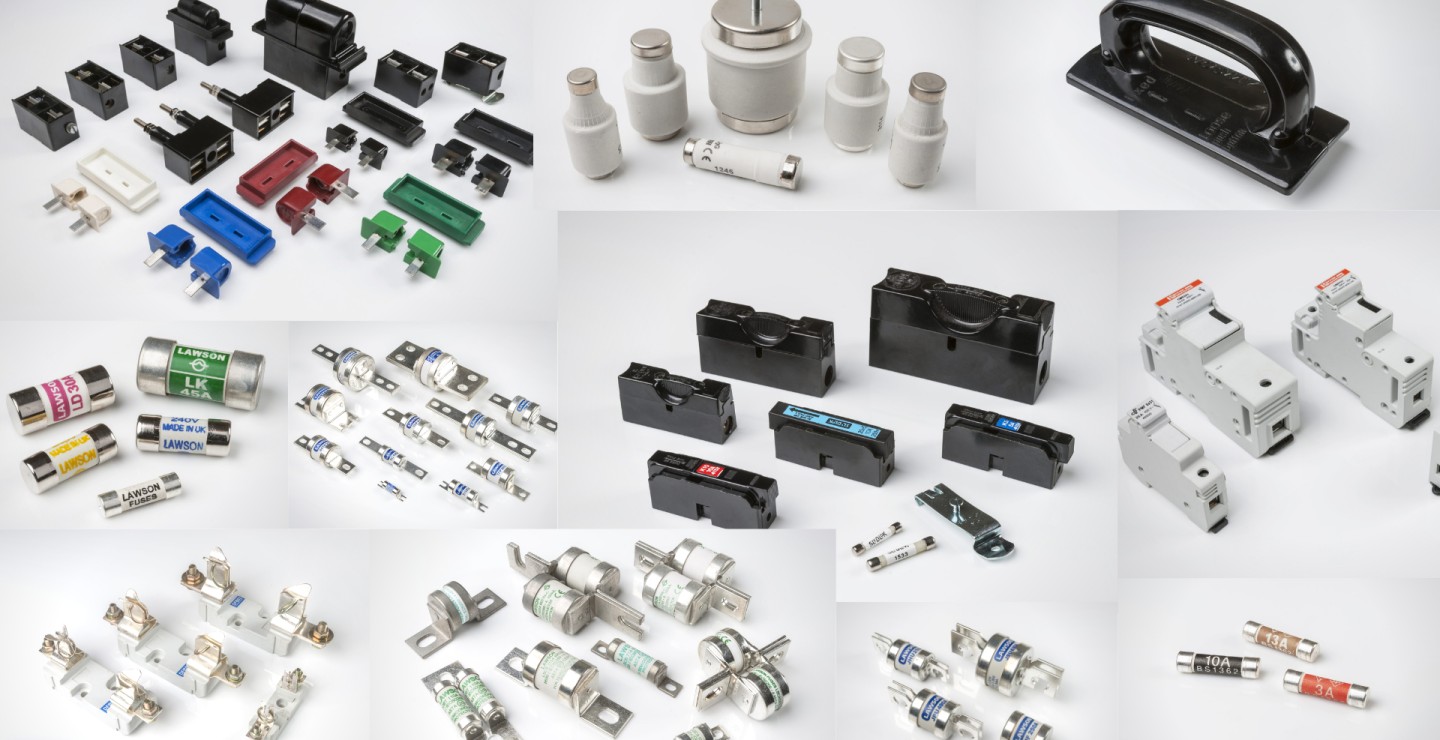A Comprehensive Guide to Fuse Links: Types, Functions & Applications of HRC Fuses
Fuses are simple yet essential safety devices, widely used in electrical systems to protect against overloads and short-circuit currents. When a high electrical current surges through, the fuse blows and breaks the circuit, helping to minimise heat damage and reduce the risk of electrocution or fire. This is often referred to as tripping a circuit. The point at which a fuse blows is called its breaking capacity. Once triggered, the fuse cuts off the current and becomes an open circuit.
Overcurrents can be caused by short circuits, electrical arcs, configuration faults, and other technical issues. The resulting heat is often enough to melt cable insulation. In this guide, we’ll cover the key aspects of fuses, including technical components, types, selection tips, and more.
Key Components of HRC Fuses
Element
The element determines the time-current characteristics, temperature rise, and power dissipation. It must be precisely designed and cut for effective operation during short circuits and overloads. Often called the “heart of the fuse-link,” a well-cut element ensures low power dissipation and compliance with performance standards. The material should be highly conductive.
Ceramic Body
The ceramic body acts as a high-grade electrical insulator, built to withstand strong electrodynamic forces and thermal stress. It should allow clear printing, have a smooth finish to prevent dust build-up, and a density of at least 2.9–3.
End Caps and Tags
Made from highly conductive materials, end caps and tags ensure low temperature rise, minimal power loss, reduced let-through energy, and high current-carrying capacity.
Arc Quenching Medium
High-quality silica sand is used to quench arcs, playing a vital role in the safety and performance of HRC fuse-links.
Importance of Silica Sand in Fuse Links
Silica sand is crucial in limiting current. Only crystal quartz sand with high chemical and mineralogical purity (SiO₂ > 99.5%) is used, completely anhydrous thanks to fire-drying. Defined grain size and optimal packing density are essential for effective arc quenching.
During overloads, the solder melts, dissolving adjacent restrictions and initiating an arc. This arc burns until extinguished at the next current zero point. The quartz sand cools the arc channel, preventing re-ignition when recovery voltage appears.
In the arcing zone, a non-conductive sinter body forms from fuse-element metal, solder, and quartz, also known as a fulgurite or “caterpillar.”
From the fulgurite shape, fuse experts can determine the current that caused the fuse to operate. At very high currents, all restrictions melt almost instantly, forming multiple serial arcs and creating a fulgurite that runs uniformly along the element—a typical indicator of short-circuit interruption.
See the accompanying image of a fulgurite.

During a high current event, such as a short circuit, all restriction points heat up rapidly and vaporise explosively. The resulting metal vapour is forced into the gaps between the sand grains under high pressure and is quickly cooled at the outer surfaces. This process helps to limit the pressure inside the fuse. See the image to observe how all restriction points heat up simultaneously.

The grain size of the sand and the filling factor play a crucial role in ensuring a successful breaking process.
If the sand is packed too tightly, often due to excess dust, extremely high pressure can build up inside the fuse, increasing the risk of the fuse body bursting.
-
See Picture A (left): Example of incorrect sand filling, improper grain size, or contamination with moisture, iron, or conductive particles.
-
See Picture B (right): Example of correct sand filling with properly graded grain size.

What Are the Key Functions of Fuses?
Fuses serve several important functions, helping you choose the right fuse and holder for your needs.
-
Overcurrent Protection
Fuses protect electrical circuits and equipment from overcurrents. When the current exceeds the rated value, the fuse melts and breaks the circuit, preventing hazards and damage. -
Short Circuit Protection
HRC fuse links protect circuits from short circuits by melting and cutting off the power supply during fault conditions, reducing the risk of severe damage. -
Fault Detection
Fuses also act as fault indicators. When a fuse blows, it signals a fault in the system that should be addressed before replacement.
HRC fuses are simple, cost-effective, and reliable protection devices, with fewer moving parts than conventional circuit breakers. While circuit breakers can be reset, repeated tripping causes wear, leading to issues like contact welding and spring degradation. HRC fuses can also protect circuit breakers from nuisance tripping, extending their lifespan. They are easy to maintain and replace, with high current ratings and breaking capacities.
What Are the Different Types of Fuses?
Fuses are categorised by body size, connection type, utilisation category, and rated voltage.
-
By Body Size: Round barrel/cartridge, square body, DIN or NH types.
-
By Connection Type: BS bolted, knife, wedge, cylindrical, or flush-end types.
-
By Utilisation Category:
-
gG (general purpose)
-
aR/gR/gS (semiconductor protection)
-
PV (photovoltaic applications)
-
gBat/aBat (battery storage protection)
-
gTR (traction/railway applications)
-
Motor protection fuse links
-
-
By Rated Voltage: 230V, 415V, 500V, 690V, 800V AC; 690V, 1000V, 1500V DC
-
Semiconductor Fuses
Fast-acting fuses for protecting sensitive semiconductor devices in rectifiers, motor drives, converters, inverters, and relays. -
Battery Fuses
Designed for battery storage systems, from 12V to 1500V DC, to protect battery modules from short circuits and overcurrents while supporting thermal management. -
Photovoltaic (PV) Fuses
DC-rated fuses for solar applications, designed to IEC 60269 or UL 248-19 standards.
What Are the Applications of Fuses in Different Industries?
Fuses are used across a wide range of industries:
-
Data Centres and Telecommunications
Low-voltage and ultra-fast fuses protect PDUs, UPSs, and sensitive communications equipment, ensuring stability in high-density environments. -
Industrial Control Systems
Fuses protect industrial machinery, transformers, motors, and distribution systems from faults, with HRC types handling extremely high fault currents. -
Residential and Commercial Buildings
Fuses provide reliable protection for circuits, appliances, and lighting systems in homes and businesses. -
Automotive Applications
Automotive fuses protect vehicle electrical systems, including lighting, audio, heating, and air conditioning components.
Wrapping It Up
Fuses provide essential protection against both minor and major short circuits and overcurrents. At Lawson Fuses, we offer a wide range of high-quality fuse links, built to meet industry standards and ensure complete protection.
Whether you need fuses for domestic, commercial, industrial, or automotive applications, Lawson Fuses can provide expert advice and premium products. Get in touch with us today for reliable, cost-effective fuse solutions.
For more news and information, please click here.


